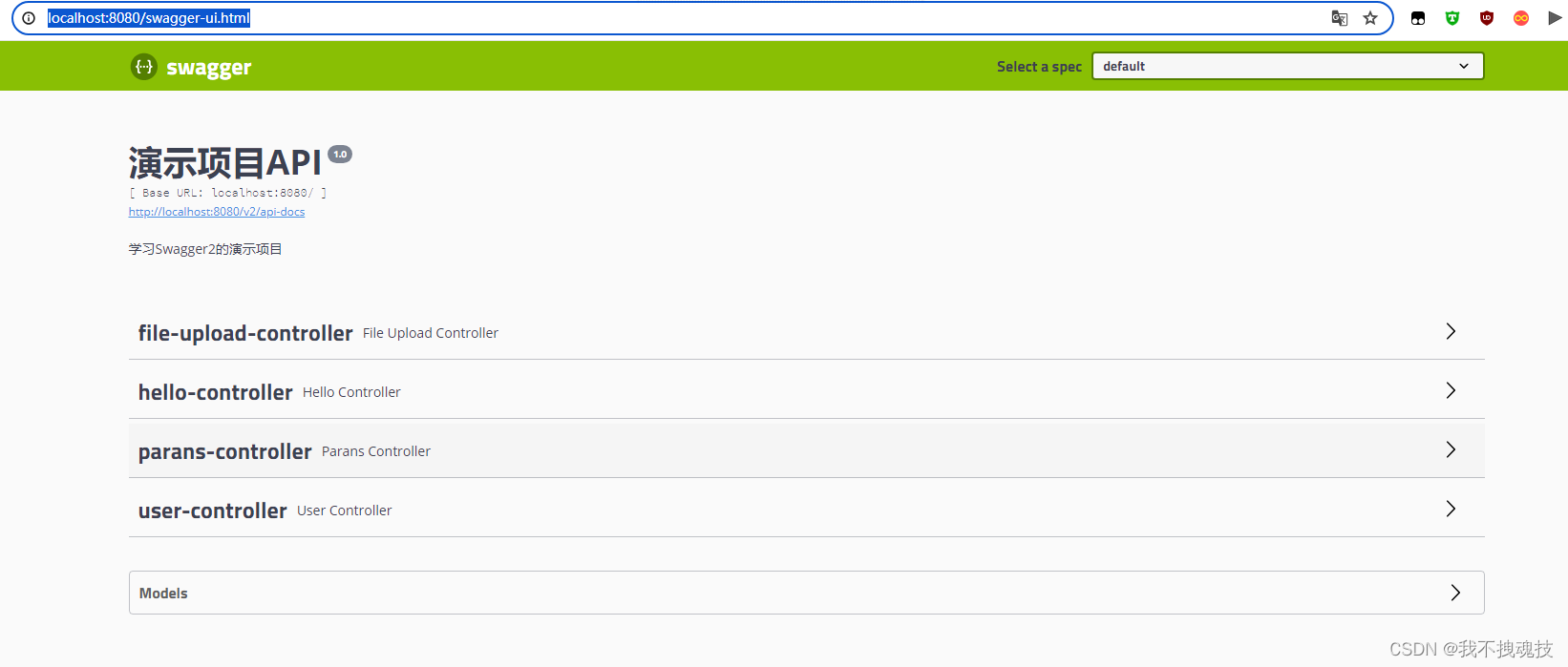Swagger是一套用于创建、描述和测试RESTful风格的Web服务的工具和框架。它能够自动生成详尽的API文档,并在后台代码更新时自动同步更新文档内容。此外,Swagger还提供了一个完整的测试页面,可用于调试API。
配置Swagger有以下步骤:
1、在pom文件中添加依赖
<dependency>
<groupId>io.springfox</groupId>
<artifactId>springfox-swagger2</artifactId>
<version>2.9.2</version>
</dependency>
<dependency>
<groupId>io.springfox</groupId>
<artifactId>springfox-swagger-ui</artifactId>
<version>2.9.2</version>
</dependency>2、添加config配置类
//Swagger配置
package com.example.helloword.config;
import org.springframework.context.annotation.Bean;
import org.springframework.context.annotation.Configuration;
import springfox.documentation.builders.ApiInfoBuilder;
import springfox.documentation.builders.PathSelectors;
import springfox.documentation.builders.RequestHandlerSelectors;
import springfox.documentation.service.ApiInfo;
import springfox.documentation.spi.DocumentationType;
import springfox.documentation.spring.web.plugins.Docket;
import springfox.documentation.swagger2.annotations.EnableSwagger2;
@Configuration //告诉Spring 容器,这个类是一个配置类
@EnableSwagger2 //启用Swagger2功能
public class SwaggerConfig {
@Bean
public Docket createRestApi() {
return new Docket(DocumentationType.SWAGGER_2)
.apiInfo(apiInfo())
.select()
.apis(RequestHandlerSelectors.basePackage("com")) //扫描哪个包
.paths(PathSelectors.any()).build();
}
private ApiInfo apiInfo() {
return new ApiInfoBuilder()
.title("演示项目API")//标题
.description("学习Swagger2的演示项目")//描述
.version("1.0")//版本
.build();
}
}3、在application.properties中添加
#Springboot2.6.x后与Swagger有版本冲突问题,需要在application.properties中加入以下配置
spring.mvc.pathmatch-startegy=ant_path_matter注意:在application.properties中如果有设置静态资源目录的需注释下,之前我就是因为静态资源过滤的原因导致在服务器打不开swagger
#spring.mvc.static-path-pattern=/images/**
#spring.web.resources.static-locations = classpath:/css4、在浏览器输入http://localhost:8080/swagger-ui.html,即可访问swagger的ui界面(我的服务器端口是8080,一般springboot默认为8080端口),在ui界面可以查看自己的controller接口






 本文介绍了如何在SpringBoot项目中集成Swagger工具,包括添加依赖、配置Swagger2、解决版本冲突及静态资源问题,最后展示了如何通过浏览器访问SwaggerUI进行API测试。
本文介绍了如何在SpringBoot项目中集成Swagger工具,包括添加依赖、配置Swagger2、解决版本冲突及静态资源问题,最后展示了如何通过浏览器访问SwaggerUI进行API测试。
















 1589
1589










